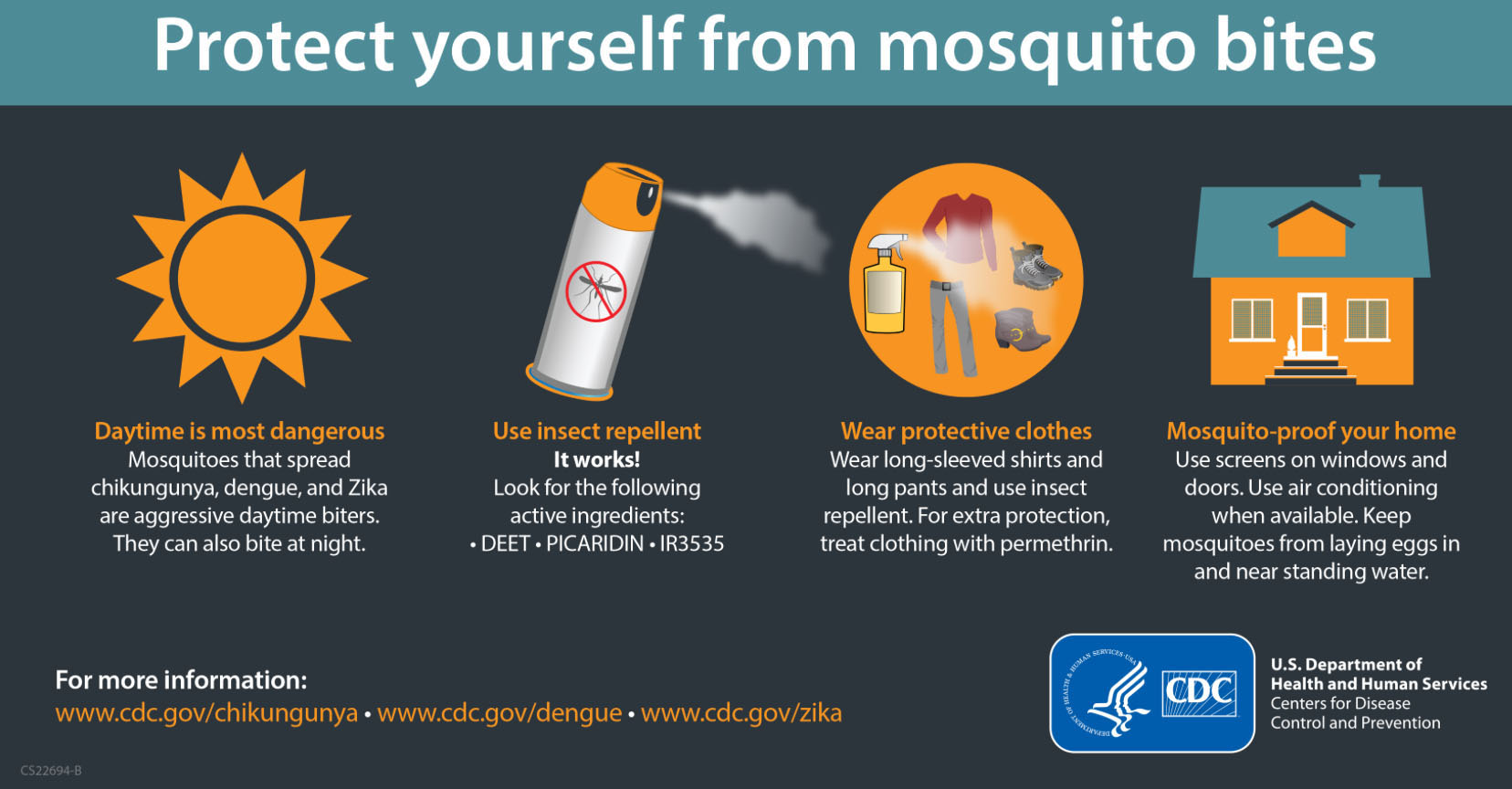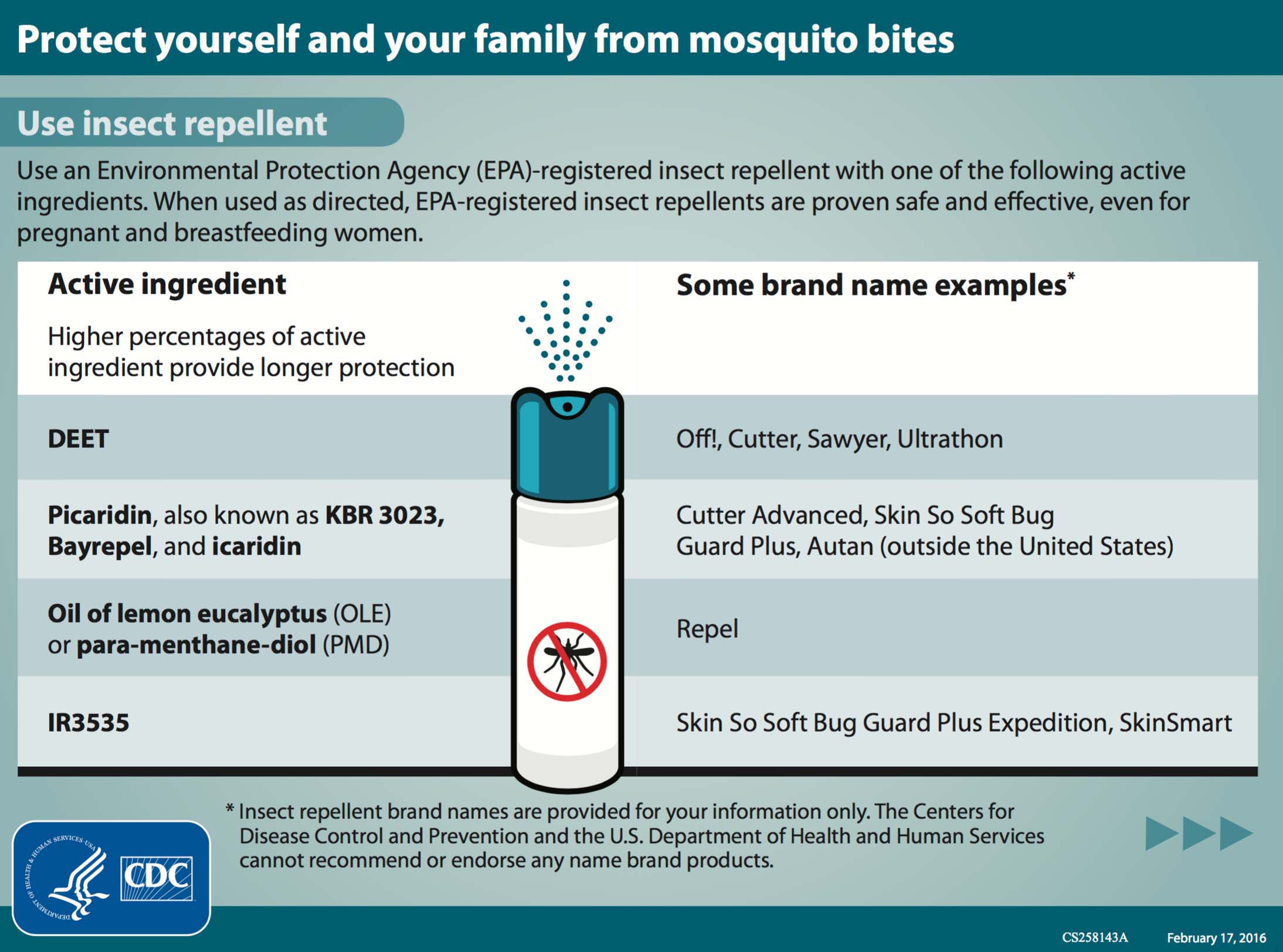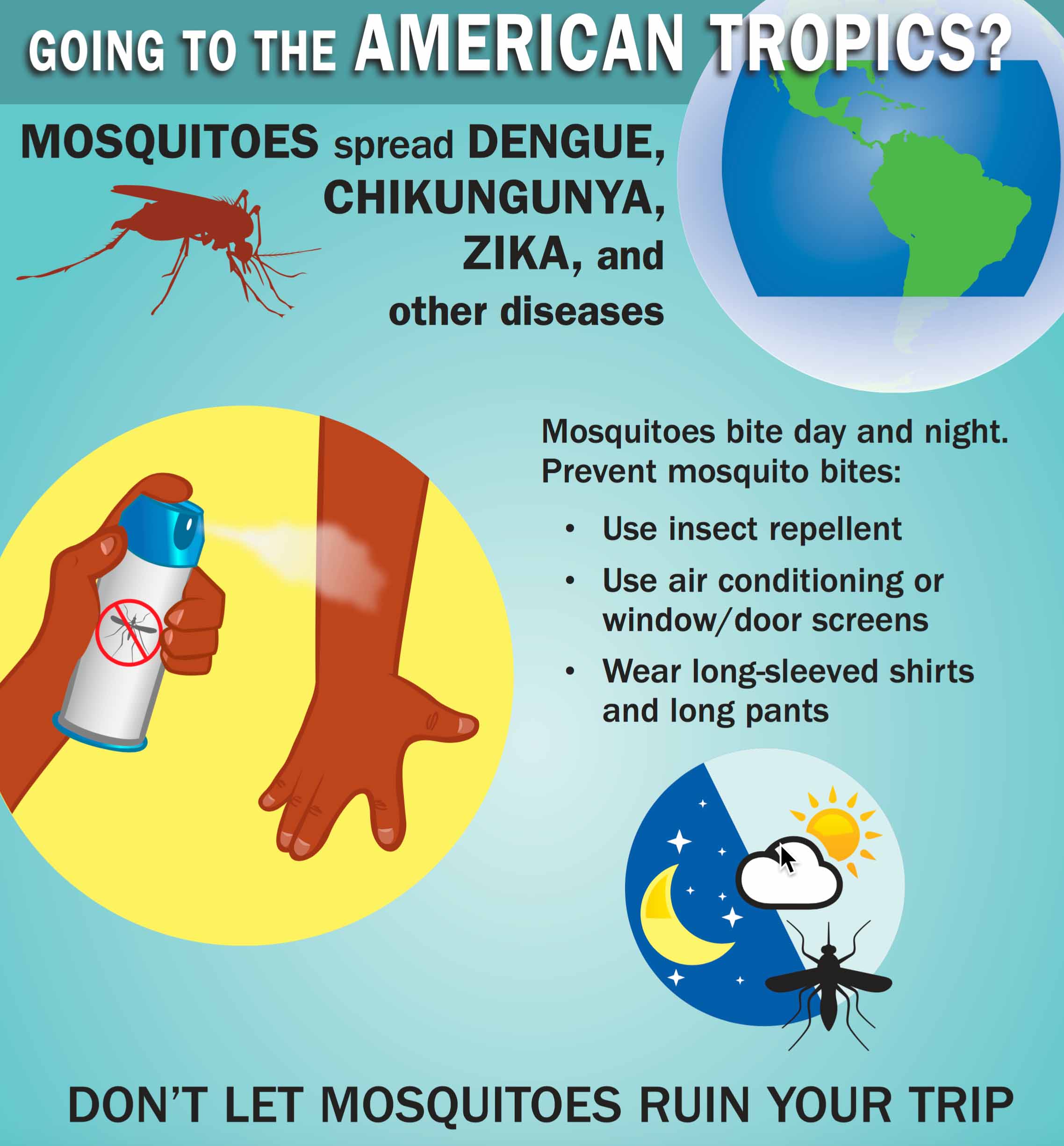Zika was reported in May 2015 in South America and since then has spread throughout the Americas. The CDC and Pan American Health Organization (PAHO) websites maintain and update the list of areas where Zika virus transmission has been identified.
The virus spreads to humans primarily through infected Aedes aegypti mosquitoes.  Once a person is infected, the incubation period for the virus is approximately 3-12 days. Symptoms of the disease are non-specific but may include fever, rash, aching in joints, and eye inflammation. It appears that only about 1 in 5 infected people will have these symptoms and most will have mild symptoms. It is not known if pregnant women are at greater risk of infection than non-pregnant.
Once a person is infected, the incubation period for the virus is approximately 3-12 days. Symptoms of the disease are non-specific but may include fever, rash, aching in joints, and eye inflammation. It appears that only about 1 in 5 infected people will have these symptoms and most will have mild symptoms. It is not known if pregnant women are at greater risk of infection than non-pregnant.
Zika during pregnancy  has been associated with birth defects, specifically significant microcephaly (small fetal head). Transmission of Zika to the fetus has been documented in all trimesters; Zika virus RNA has been detected in fetal tissue from early miscarriages, amniotic fluid, babies and the placenta. However, much is not yet known about Zika virus in pregnancy. Uncertainties include the incidence of Zika virus infection among pregnant women in areas of Zika virus transmission, the rate of transmission to the fetus, and the rate with which infected fetuses have complications such as microcephaly or demise. The absence of this important information makes management in the setting of potential Zika virus exposure (i.e. travel to active areas) or maternal infection, difficult. Currently, there is no vaccine or treatment for this infection.
has been associated with birth defects, specifically significant microcephaly (small fetal head). Transmission of Zika to the fetus has been documented in all trimesters; Zika virus RNA has been detected in fetal tissue from early miscarriages, amniotic fluid, babies and the placenta. However, much is not yet known about Zika virus in pregnancy. Uncertainties include the incidence of Zika virus infection among pregnant women in areas of Zika virus transmission, the rate of transmission to the fetus, and the rate with which infected fetuses have complications such as microcephaly or demise. The absence of this important information makes management in the setting of potential Zika virus exposure (i.e. travel to active areas) or maternal infection, difficult. Currently, there is no vaccine or treatment for this infection.
Prevention Guidance:
- Avoiding exposure is best. Pregnant women should delay travel to areas where Zika outbreaks are ongoing when possible. Women considering pregnancy should discuss with their obstetricians the advisability of travel. See the CDC and PAHO websites for updated lists of affected countries.
- When traveling to areas where Zika has been reported, women should take all precautions to avoid mosquito bites including the use of EPA-approved bug spray with DEET, covering exposed skin, staying in air-conditioned or screened-in areas, and treating clothing with permethrin.

- Sexual transmission of Zika virus has been reported in a few cases but the frequency and efficiency of this route of infection is uncertain. Based on limited data, there is a theoretical risk of sexual transmission through exposure to semen of males with Zika virus disease. Given the potential risks of maternal Zika virus infection, pregnant women whose male partners have traveled to countries in which Zika is reported or have Zika virus infection should consider using condoms or abstaining from sexual intercourse.
Summary of Updated Guidance:
- Antibody testing for Zika virus is now recommended for all pregnant women who have traveled to or lived in affected area regardless of the presence of clinical illness.
- Physicians should discuss reproductive plans, including pregnancy planning and timing, with women of reproductive age considering the potential risks associated with Zika virus infection.
- Women of reproductive age with current or previous laboratory-confirmed Zika virus infection should be aware that there currently is no evidence that prior Zika virus infection poses a risk of birth defects in future pregnancies.
- Although the presence of Zika in breast milk has been reported, it is in very small amounts and unlikely to be harmful for the neonate. The benefits of breastfeeding likely outweigh the potential neonatal risks. Therefore, the recommendation is that women should continue to breastfeed.

If you are pregnant or planning for pregnancy check with us before traveling to areas of the American tropics and strictly follow steps to avoid mosquito bites during your trip.
